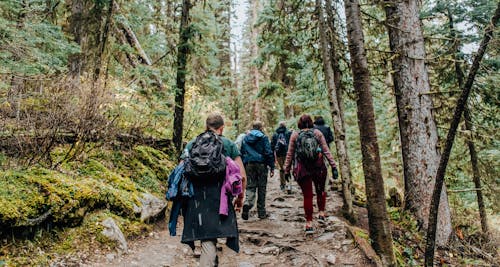Written by the AORE Access & Permitting Committee

Across the country, outdoor program managers rely on access to public lands to run meaningful, mission-driven programming. But many of the land managers stewarding those places are facing an uphill battle: staffing shortages, rising visitation, aging infrastructure, climate impacts, and inconsistent policy direction. Now more than ever, program managers must see themselves not just as users of public lands, but as partners in their care. The time is now for outdoor educators and leaders to step up in solidarity, with professionalism and purpose, to support our local land managers in tangible, lasting ways.
Practice Solid Risk Management
One of the most immediate ways to support land managers is to run professional, proactive risk management systems. Every unnecessary rescue or avoidable incident is not only a danger to our participants, but it also draws limited ranger and emergency resources away from broader needs. Program managers should ensure their staff and students are well-trained, routes are appropriate and well-communicated, contingency plans are in place, and local emergency protocols are known. When things go wrong “out there,” land managers notice who comes prepared and who doesn’t. And they remember.
Give Back
Support also means giving back. Our programs spend a lot of time on public lands; how often do we give back to it? Coordinating trail work days, volunteering with partner agencies, participating in habitat restoration efforts, or simply mailing a thank you card from a recent student group to your local field office all go a long way. Small gestures of gratitude, stewardship, and reciprocity build lasting relationships and a deeper culture of care. Many hands make light work, and land managers need our hands now more than ever.
Run a Good Program
We also support our land management partners by simply running solid programs. That means staying compliant with permit conditions, proactively communicating with field offices, and managing our participants in ways that reduce their impact. Avoiding overcrowded areas, practicing Leave No Trace and educating our groups on the “why” behind land regulations makes everyone’s job easier. And when we model these behaviors, our participants become better land users long after they’ve left our program.
Conclusion
Behind every permit is a person. Behind every access point is a team making hard decisions. Behind every trail we hike is a web of maintenance, monitoring, and management that too often goes unseen. As program managers, we sit at a unique intersection between users and stewards. Let’s choose to be more than passive users. Let’s be active allies; visible, dependable, and solutions oriented.
This blog post began as a conversation within the AORE Access and Policy Committee, but the values here echo throughout the AORE community. We know our members care deeply about access, equity, stewardship, and professionalism in the outdoor field. Now is our chance to embody those values in our relationships with the land, and with the people who protect it.
So, consider this a call to action. Reach out to your local land manager. Ask how they’re doing, what they need, and how your program might help. Offer a hand. Show up. Support the stewards, and together we can strengthen the places that sustain our work, and our spirit.
Photo Credit: Pexels.com